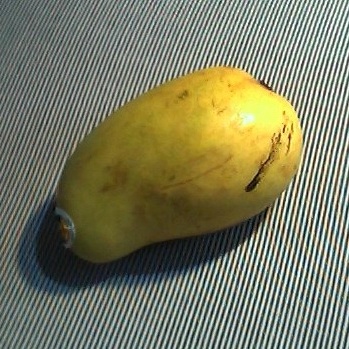Tree up to 35 m high ar 75(-155)cm ø. Buttresses occasionally present, lf5 m high, 1 m extending outward. Bark greyish brown, fissured. Leaves (sometimes seemingly verticillate towards the end of twigs), coriaceous, elliptic, obovate, ovate-oblong, or lanceolate, 9-30(-41½) by 3½-10 (-12) cm; base cuneate; apex short-acuminate or obtuse; nerves 14-33 pairs, slightly elevated on both surfaces; veins obscure on both surfaces; petiole flattened, 1½-2½(-6) cm. Panicles terminal, pyramidal, 15-45(-75)cm long, puberulous; lateral branches up to 15 cm long, densely flowered; floral bracts ovate, 2 mm long; pedicels c. 1 mm. Flowers violet or lilac. Calyx 5-lobed, lobes ovate, lanceolate, or elliptic, 1½-3 mm, puberulous outside. Petals 5, narrow-elliptic or-oblanceolate, 5-8 by 1-1½45 mm; ridge 1, 2-3 mm long. Disk pulvinate, stipe-like, ½-1 mm high, not papillose. Stamens 5, 1 (or 2) fertile, (½-)4-9 mm; filaments not connate at the base; anthers oblong, ½ mm long; staminodes 1⅓-1½ mm. Ovary subglobose, ⅓-½ mm Ø; style slightly excentric, 1-7 mm. Sterile pistil in ♂ up to 1 mm. Drupe (fresh) (cf OCHSE & BAKH. l.c.; KOSTERMANS l.c.) pale brown or brownish-yellow (with rough, scaly or scurfy skin), or green-white (glossy), ellipsoid or pear-shaped, 12-19 by 6-10 cm; flesh yellowish-white, juicy, sour or sour-sweet, coarsely fibrous. Seed not labyrinthine.
More
The large tree. It reaches a height of 25-45 m. The trunk can be 50-120 cm across. It does not have buttresses. The branches are large and the crown is dome shaped. The bark is greyish-brown. It has slight cracks along its length and the sap causes irritation. The leaves are smooth and pointed at both ends. They are normally 10-12 cm long by 4-6 cm wide. They are shiny above and paler underneath. The leaves are often crowded at the ends of the stout branches. The leaf stalk is stout and flattened and 1-2 cm long. The flowering stalks are at the ends of branches and are 15-40 cm long. The flowers are pale pink and there are many on a stalk. The petals are narrow and 10 mm long and do not curve backwards as in mango. The fruit resembles the common mango. They are 12-15 cm long by 6-7 cm wide. Some fruit are excellent. The skin is yellow-brown and the flesh is yellow-white.
A tropical plant. It suits the lowland tropics. They grow in the humid tropics. They are often in areas which are occasionally flooded and swamp areas. It is found in Mindanao and neighbouring islands of Sulu in the Philippines. In Borneo it grows up to 500 m above sea level. It suits hardiness zones 11-12.
More
In lowland primary forest, swamp forest, or in periodically inundated areas along rivers, up to 450 m. Fl. Febr.-Dec.; fr. Jan.-Dec, in Malaya April-June.
A mid-canopy tree, rather rare in forests, it is found more frequently in periodically inundated areas and marshes at elevations up to 500 metres.


